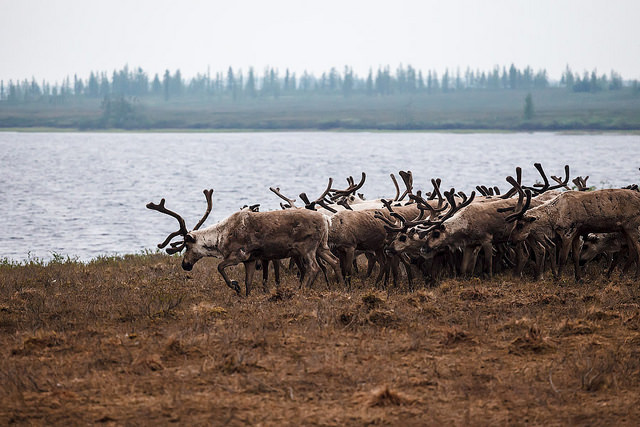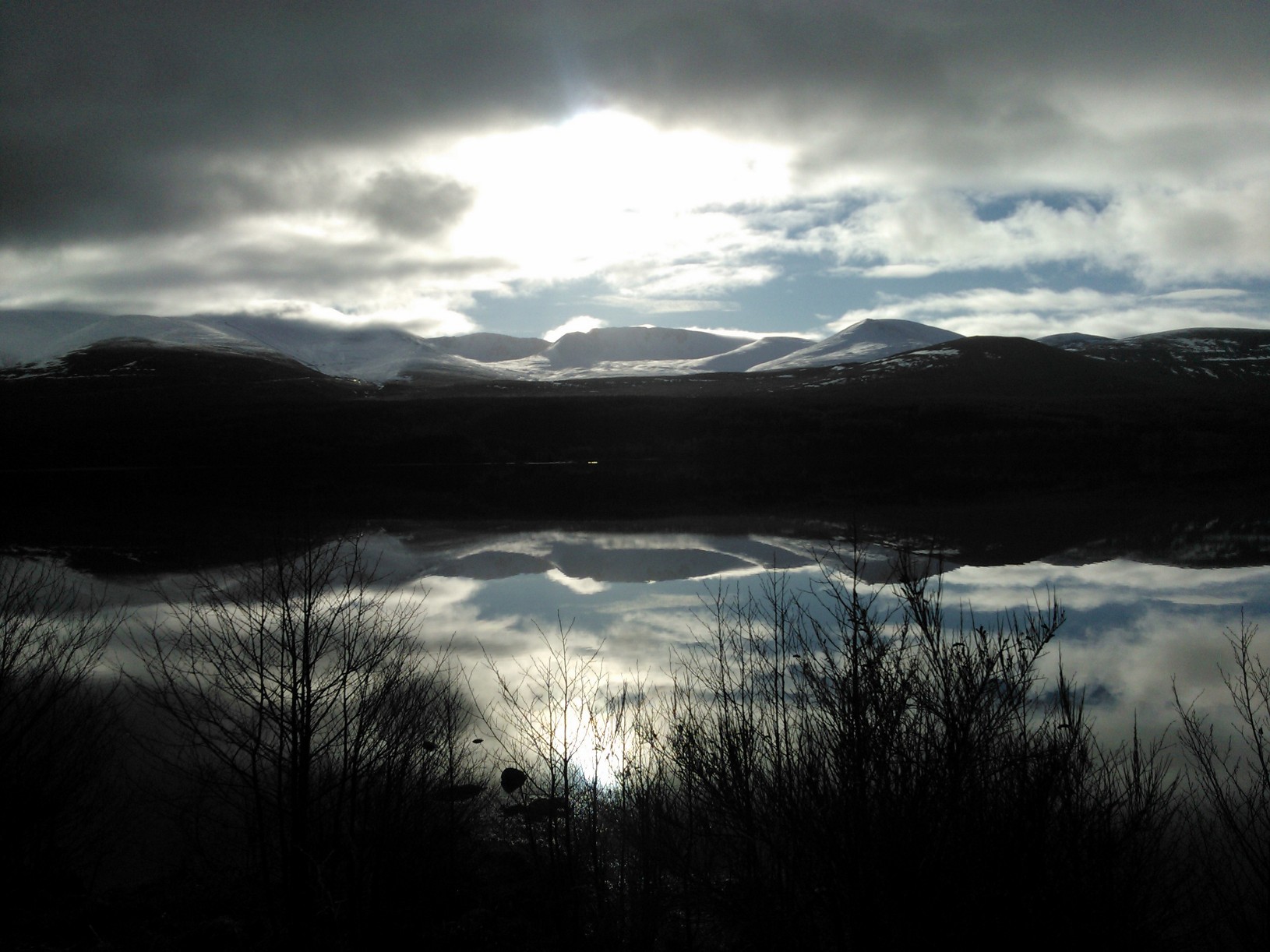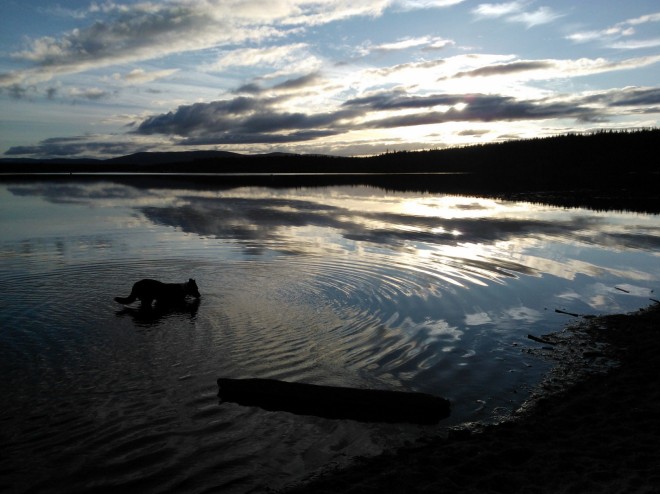Recently via Twitter we were moved at the news of an anthrax outbreak in Western Siberia, the Yamalo-Nenets region, which has hospitalised over 90 reindeer herders and caused the deaths of almost 2,500 reindeer. The nomadic families herding reindeer across the area were evacuated or vaccinated – authorities are aiming to vaccinate over 40,000 reindeer. In the last few days, a 12-year old boy and his granny have both died.

It is thought that melting permafrost exposed the carcass of a long-dead reindeer, and dormant anthrax contained within it was exposed and became active. In cold temperatures the spores contained within the ground are capable of surviving up to 150 years; in warmer temperatures they morph into a more infectious state.
The melting of the permafrost is unusual, both in its location and its extent. Warming of the tundra this year has been unusually high, with temperatures of 35 degrees. Climate change is something you hear of more and more in reindeer literature and research around the world.

The habitats are changing – flora and fauna increase or decrease as ecosystems fluctuate due to climate, disease or human influence – for example, millions of hectares of birch forest are defoliated by outbreaks of moth now confined to northern latitudes due to climate; wildfires are more common as habitats’ defences weaken; lichens are reduced due to increased pressure on remaining areas and competition; more oil is piped out, disrupting migratory patterns; politics confine reindeer to particular boundaries; and as a way of life reindeer herding becomes more economically challenging.
In Yakutia, to the east of Yamalo-Nenets, there are around 200 burial grounds of cattle which died from anthrax. Perhaps hoping that they won’t be affected isn’t enough.
As a small Scottish reindeer ‘family,’ it is sobering to wonder about the slowly unfolding systemic impact on reindeer and herders around the world – but of course this is just a small part of a very large story, and we mustn’t lose sight of this larger picture that affects us all.
Read more:
New Scientist article: https://www.newscientist.com/article/2099486-child-dies-in-anthrax-outbreak-linked-to-thawed-reindeer-corpse/
Washingon Post article: https://www.washingtonpost.com/news/morning-mix/wp/2016/07/28/anthrax-sickens-13-in-western-siberia-and-a-thawed-out-reindeer-corpse-may-be-to-blame/
BBC article: http://www.bbc.co.uk/news/world-europe-36951542
Sarah








